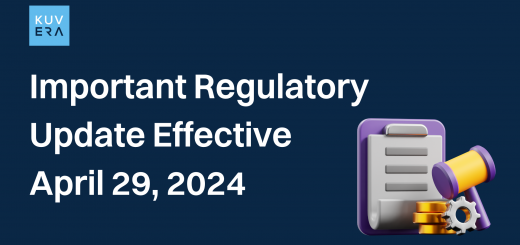In our previous blog, we have discussed 5 important financial schemes of the Indian gov that you should be aware of. You can check that out here.
In today’s blog we will discuss 4 more such financial schemes that you should be aware of and consider availing the benefits of these schemes.
1. Stand Up India Scheme
The Stand Up India Scheme was introduced by the Government of India on April 5, 2016. The primary objective of the Stand Up India Scheme is to promote entrepreneurship among SC/ST and women by providing them with access to affordable credit and handholding support. The scheme aims to facilitate the establishment of a large number of greenfield enterprises, generating employment opportunities and fostering economic growth.
Eligibility Criteria
The Stand Up India Scheme is open to individuals who are either Scheduled Castes (SC) or Scheduled Tribes (ST) or women entrepreneurs. The scheme supports greenfield enterprises, which are ventures that are being set up for the first time.
- For Individuals: The minimum age requirement is 18 years at the time of loan application.
- For Greenfield Enterprises: The age of the borrower should be within the range of 18 to 65 years.
Key Benefits of Stand Up India Scheme
- Financial Assistance: Under the Stand Up India Scheme, eligible individuals can avail loans from Scheduled Commercial Banks (SCBs) to start new enterprises. The loans are provided with lower interest rates and collateral-free up to Rs. 10 lakh for greenfield enterprises in the manufacturing, services, or trading sectors.
- Loan Tenure: The loan repayment tenure can extend up to 7 years, providing flexibility to entrepreneurs in repaying the borrowed amount.
- Composite Loan: The scheme offers composite loans, which include both term loans and working capital loans. This helps entrepreneurs cover both fixed capital investment and working capital requirements.
- Credit Facilitation: The Stand Up India Scheme provides support through credit facilitation, including handholding, support for pre-loan training, and guidance in the preparation of project reports.
- Subsidy for Bank Loan: The scheme also provides a subsidy for interest on the loan availed under Stand Up India, which further reduces the financial burden on the entrepreneur.
- Simplified Loan Application Process: The application process for Stand Up India loans has been streamlined to facilitate easy access to credit. Entrepreneurs can apply for loans online or offline, based on their convenience.
2. Sukanya Samriddhi Yojana (SSY)
The Sukanya Samriddhi Yojana (SSY) scheme was launched by the Government of India on January 22, 2015. The scheme was introduced as part of the government’s Beti Bachao Beti Padhao (Save the Girl Child, Educate the Girl Child) campaign to promote the welfare and financial security of girl children in the country.
The primary objective of the Sukanya Samriddhi Yojana (SSY) is to promote the welfare and financial security of the girl child. The scheme aims to provide parents or legal guardians with a long-term savings option to meet the education and marriage expenses of the girl child, while also offering tax benefits.
You can check this for detailed information on Sukanya Smariddhi Yojana (SSY) and hoe you can invest in this scheme.
Eligibility Criteria:
The Sukanya Samriddhi Yojana (SSY) is available for the parents or legal guardians of a girl child.
The girl child should be below the age of 10 years at the time of account opening.
Key Benefits of Sukanya Samriddhi Yojana (SSY)
- Long-Term Savings: SSY encourages long-term savings for the education and marriage expenses of a girl child.
- Tax Benefits: Contributions made towards the SSY account are eligible for tax deductions under Section 80C of the Income Tax Act, up to a specified limit.
- Attractive Interest Rate: The scheme offers an attractive rate of interest, which is typically higher than most other government savings schemes.
- Account Maturity: The SSY account matures after 21 years from the date of opening or upon the marriage of the girl child, whichever is earlier.
- Partial Withdrawals: Partial withdrawals of up to 50% of the account balance are allowed for the higher education or marriage of the account holder after she attains 18 years of age.
- Account Transfer: The SSY account can be transferred anywhere within India, without any charges, in case of relocation.
- Government-Backed Scheme: Sukanya Samriddhi Yojana is a government-backed scheme, providing a secure and reliable savings avenue for the future of the girl child.
3. National Savings Certificate (NSC)
The National Savings Certificate (NSC) is a popular savings scheme offered by the Government of India and was introduces in 1959.
Eligibility for NSC
- Citizenship: The NSC scheme is open to resident individuals of India.
- Age: There is no specific age restriction for investing in NSC. It can be availed by individuals of any age, including minors. However, a guardian or parent must make the investment on behalf of minors.
- Number of Accounts: Individuals can invest in NSC on their own behalf or on behalf of minors. There is no limit on the number of NSC accounts one can hold.
Benefits of National Savings Certificate (NSC)
- Safe Investment: NSC is a government-backed savings scheme, providing a secure investment avenue.
- Small Denominations: NSC is available in small denominations, making it affordable and accessible for individual investors.
- Fixed Interest Rate: NSC offers a fixed interest rate, which is set by the government at the time of purchase. The interest rate remains constant throughout the investment tenure.
- Investment Period: NSC has a fixed investment period of 5 years.
- Tax Benefits: The investment made in NSC qualifies for tax deductions under Section 80C of the Income Tax Act, up to a specified limit.
- Guaranteed Returns: NSC ensures guaranteed returns on the invested amount, as per the prescribed interest rate.
- Cumulative Scheme: NSC follows a cumulative interest payment model, where the interest is reinvested and compounded annually until maturity.
- Wide Accessibility: NSC can be purchased from designated post offices across India, making it accessible to individuals in various locations.
- Transferable: NSC can be transferred from one person to another, under certain circumstances, as per the guidelines specified by the government.
4. Senior Citizen Saving Schemes
The Senior Citizen Savings Scheme (SCSS) was introduced by the Government of India on August 2, 2004. The main objective of the Senior Citizen Savings Scheme (SCSS) is to provide financial security and regular income to senior citizens. The scheme aims to cater specifically to the needs of individuals who are 60 years old or above, ensuring that they have a reliable investment option that offers competitive returns and stability.
Eligibility Criteria for Senior Citizen Savings Scheme (SCSS)
- Age: The SCSS is specifically designed for individuals who are 60 years old or above at the time of opening the account. In some cases, individuals who have opted for voluntary retirement at the age of 55 or above, but less than 60 years old, may also be eligible to open an SCSS account within one month of receiving the retirement benefits.
- Citizenship: The SCSS is available to resident individuals of India. Non-resident Indians (NRIs) and Hindu Undivided Families (HUFs) are not eligible to invest in SCSS.
- Account Limit: An individual can open only one SCSS account, either singly or jointly, with their spouse. However, joint accounts are restricted to spouses only.
- Investment Limit: The minimum investment amount for SCSS is Rs. 1,000, and the maximum investment limit is Rs. 15 lakh. The investment should be made in multiples of Rs. 1,000.
- Tenure: The SCSS has a fixed tenure of 5 years, which can be extended once for an additional 3 years upon maturity.
- Tax Benefits: Investments made in SCSS are eligible for tax deductions under Section 80C of the Income Tax Act, up to a specified limit.
- Interest Rate: The interest rate for SCSS is determined by the government and is revised periodically. The interest is payable on a quarterly basis.
Benefits of the Senior Citizen Savings Scheme (SCSS)
- High Interest Rate: The SCSS offers a competitive interest rate, which is typically higher than many other fixed-income savings schemes available in the market. The interest rate is determined by the government and is revised periodically.
- Guaranteed Returns: The SCSS provides assured and guaranteed returns on the invested amount. The interest is paid on a quarterly basis, providing a regular income stream for senior citizens.
- Tax Benefits: Investments made in SCSS are eligible for tax deductions under Section 80C of the Income Tax Act, up to a specified limit. This allows senior citizens to reduce their taxable income and potentially lower their tax liability.
- Security: The SCSS is a government-backed savings scheme, providing a secure and reliable investment avenue for senior citizens.
- Flexible Investment Amount: Senior citizens can invest a minimum of Rs. 1,000 and a maximum of Rs. 15 lakh in the SCSS account, making it accessible for a wide range of individuals.
- Tenure and Extension: The SCSS has a fixed tenure of 5 years, providing stability and predictability. Upon maturity, individuals have the option to extend the scheme for an additional 3 years. This allows senior citizens to continue earning interest on their investments.
- Regular Interest Payouts: The interest earned on the SCSS investment is paid out on a quarterly basis. This ensures a regular income stream for senior citizens, which can be beneficial for their day-to-day expenses and financial planning.
- Liquidity and Premature Closure: While the SCSS has a fixed tenure, premature closure is allowed after completion of 1 year, subject to certain conditions. This provides liquidity to senior citizens in case of any unforeseen financial emergencies.
Conclusion
The government of India has introduced several commendable financial schemes that cater to the diverse needs of individuals across different stages of life. These schemes offer numerous benefits and incentives to promote savings, investment, and financial security among citizens.
It is important for individuals to stay informed about these financial schemes in India and take advantage of the benefits they offer. By leveraging these financial opportunities, individuals can strengthen their financial foundation, secure their future, and contribute to the nation’s overall growth and development.
Interested in how we think about the markets?
Read more: Zen And The Art Of Investing
Watch/hear on YouTube:
Start investing through a platform that brings goal planning and investing to your fingertips. Visit kuvera.in to discover Direct Plans and Fixed Deposits and start investing today.
#MutualFundSahiHai #KuveraSabseSahiHai! #PersonalFinance











